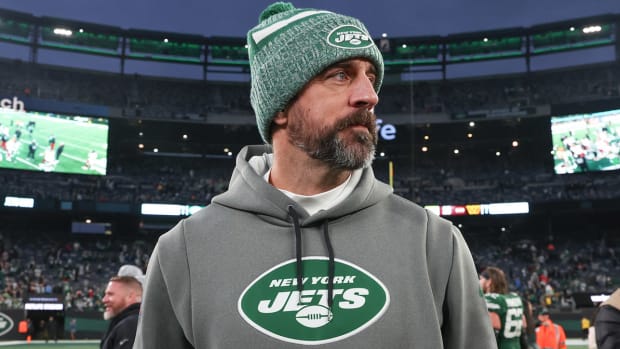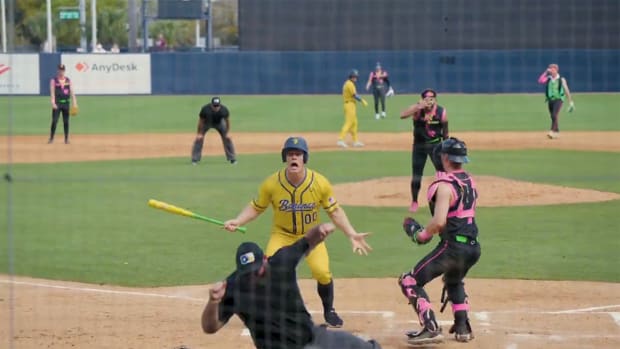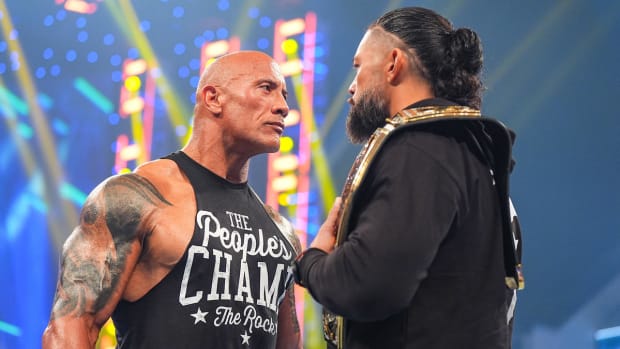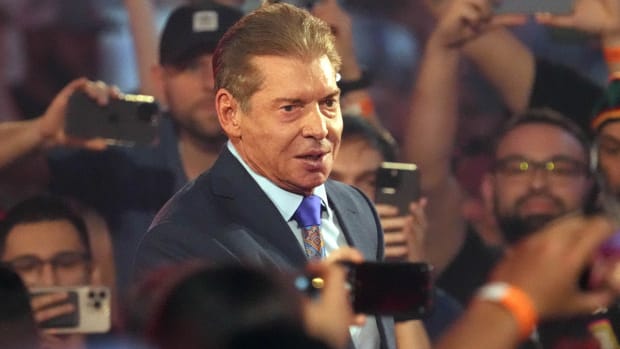The Twists and Turns Leading to WWE’s Surprising Merger With UFC
Vince McMahon’s becoming the executive chairman of the board of the newly merged WWE-UFC company is the climax of more than one story with a lot of twists and turns.
The big story, of course, is that McMahon, the most powerful player in pro wrestling for the past four decades, gave up his financial control of a company that dates back to his father’s Capital Sports Corporation that started running in the early 1950s.
The new company will be headed by Ari Emanuel, whose Endeavor purchased UFC in 2016 for $4.2 billion.
There were questions as to whether McMahon would stay or leave after the company was sold, as now WWE president Nick Khan had said, McMahon was willing to leave if that would make for the best deal. McMahon reiterated that in a CNBC interview Monday morning.
McMahon announced in a tweet last July that he was retiring from the industry he had changed from a series of regional companies to an international billion-dollar-a-year business that has exposure in 180 countries. In actuality, he was pressured to leave the company amid a series of allegations from women that he had paid off to the tune of $12 million. This included some consensual sex with employees, as well as claims of sexual coercion involving underlings whom he had power over—charges that many thought in this day and age signaled the end for him as a media business leader.
McMahon quickly had a change of heart, blaming people for convincing him getting out was the best thing for company business. He felt if he had just ridden out the storm, all would have been fine and blown over. In December, he requested to return.
The company’s board of directors voted unanimously to not allow him back, noting things that had been uncovered in an investigation the board started with an independent firm when the allegations were brought to their attention. The probe led to finding out about other cases that went back decades.
Days later, McMahon, who controlled the majority of voting shares of the company even though he was no longer owner of a majority of the stock, used that power to replace three members of the board. Then other members quit when it became clear he was coming back no matter what. And the new board members and ones that stayed voted unanimously to allow him back.
At the time the idea was he’d come back to sell the company but wouldn’t be involved in any way other than the sale and later the next round of media rights negotiations. Those who had followed the career of McMahon figured that wouldn’t last long, and it didn’t.
On Monday, when the UFC-WWE merger was announced under the auspices of Emanuel, McMahon was announced in his new role, as the most powerful officer on the pro wrestling side of the new yet-to-be-named company.
McMahon, being the second-highest ranking executive in a company that owns the UFC, is actually above UFC president Dana White. However, McMahon’s power is likely limited to the wrestling side and not the UFC side, as part of another series of twists and turns.

The merger was announced just after WWE’s signature annual event, ‘WrestleMania.’
Joe Camporeale/USA Today Sports
It is never said—not in UFC history, or almost anyone else’s history—that McMahon has played a key role in UFC’s becoming a viable business juggernaut.
Back in the late 1990s, the previous UFC ownership, headed by Bob Meyrowitz and Semaphore Entertainment Group, had lost the ability to promote shows on pay-per-view. At the time, the company’s major source of revenue was those PPV events. There were talks of selling to McMahon, with the idea his success in marketing the World Wrestling Federation on PPV could open up the closed doors. But no deal ever went through.
Instead, years later, the near-death UFC was sold to casino magnates Lorenzo and Frank Fertitta, who were high school friends with Dana White. It was White, at the time the manager of Tito Ortiz and Chuck Liddell, two of UFC’s top stars, who found out about the company being in trouble and that it could be purchased, and he got his friends with money involved.
The Fertittas and White bought the UFC for $2 million in 2001. They sold it for $4.2 billion 15 years later.
But the early years were far from smooth sailing. The White-led UFC was able to get back on PPV due to Lorenzo Fertitta’s connections to get the sport sanctioned in Nevada, and after that, was able to get it back on national PPV. But the numbers for the Fertittas-White version of UFC on PPV paled in comparison to the heyday of the original Semaphore UFC and stars like Royce Gracie, Ken Shamrock, Dan Severn and Tank Abbott.
The Fertittas were swimming in red ink and were looking at selling a few years after the purchase. But there were no buyers. Joe Silva, the company matchmaker, came up with the idea of a reality show, called The Ultimate Fighter, which would introduce new fighters to a television audience. The guise was that UFC hopefuls would be put in a house together to fight one another and get a contract with the organization.
At the time, due to negative media publicity, nobody in television would air UFC. But Kevin Kay, who headed Spike TV, was willing to give the reality show a one-season try, with a series of taped episodes that would include fights, leading to a live event in Las Vegas.
At the time, McMahon’s flagship television show, Monday Night Raw, was airing from 9 to 11:05 p.m. on Spike.
Kay’s idea was that the perfect time for the UFC reality show would be right after Raw. He felt the large audience that watched simulated fighting and drama would be intrigued enough to stay for real fights and even more drama.
But Spike felt they had to clear the idea with McMahon. Had McMahon said no, the entire history of UFC would have been different—so different that it is very much a question if it would have survived, and even if it survived, its journey to success would have been much slower.
Without the audience that came from pro wrestling for the first season of Ultimate Fighter, the show would not have drawn anywhere near the audiences it did in Season 1.
The first season of the new show couldn’t have gone better for Spike. The WWE lead-in gave the show a strong curiosity audience at first, and the reality show delivered the drama, turning unknown fighters into television stars.
A year later, Spike practically turned into the UFC channel, airing new and old matches constantly and drawing big numbers with young male viewers. UFC’s PPV business skyrocketed. The same fight that did 48,000 buys on PPV before Spike, was doing 300,000 buys after a few months of television. And, by the end of 2006, that number tripled for the biggest events.
The next piece of the story came when WWE returned to USA Network. On the very first Monday that Raw left Spike and went back to USA Network, where it has remained for the past 18 years, Spike decided to run a live UFC event in the time slot.
That was when UFC learned of the true Vince McMahon, who used a combination of clean and dirty tricks years earlier in putting all his pro wrestling competitors out of business. At the time, WWE approached Mike Goldberg, the UFC announcer, with a proposition. It offered him a job to be the lead announcer on Raw, even though he had never done pro wrestling before. And as a key part of the deal, WWE wanted Goldberg to go to the UFC show that night, then disappear without telling anyone. He would then fly to where WWE was broadcasting from, and be the lead announcer on Raw.
UFC would have no idea what happened to its announcer who never came just as it was going on the air, and then find out he was on the rival show. Welcome to fighting, Vince McMahon.
Goldberg felt that was unethical, and ended up getting a raise and stayed with UFC.
At another point, after UFC had become a major success financially, McMahon threw the idea at White of doing a match between the two of them at the 2011 WrestleMania. White turned down the offer.
The two companies dominated their respective fields. In time, UFC became the bigger success on PPV, and its biggest drawing card at that time was Brock Lesnar, a former NCAA champion who became one of the biggest stars on McMahon’s television shows but had left the company.
Lesnar, who became an even bigger star in UFC, then returned to WWE. There is no question that the UFC exposure as a top star made Lesnar a far bigger star in the WWE world when he returned.
So today, a quarter century after McMahon decided not to buy UFC, 17 years after he made the decision that led to UFC taking off, and after later trying to sabotage a live show, the two companies have come together as one.




